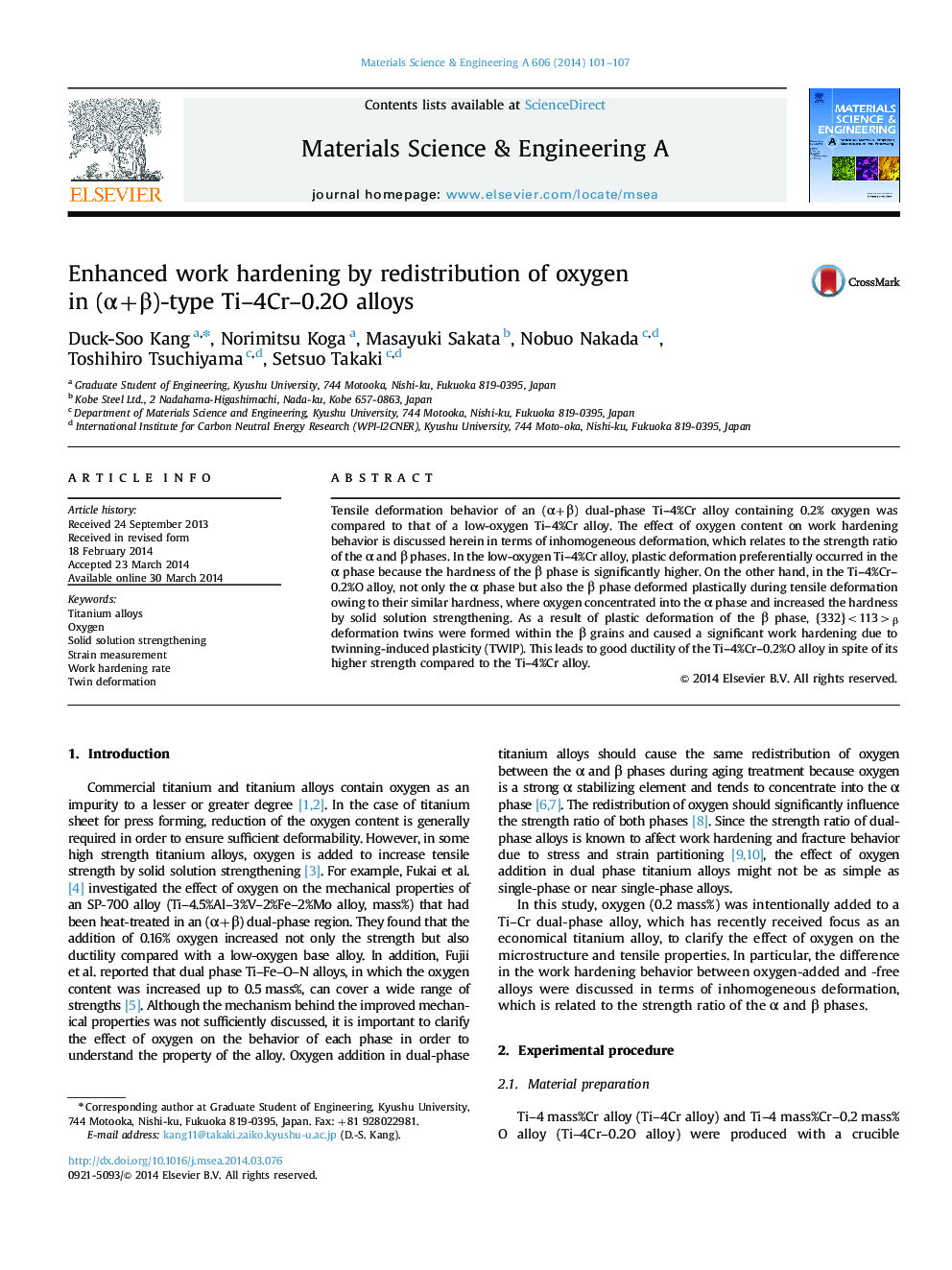| Article ID | Journal | Published Year | Pages | File Type |
|---|---|---|---|---|
| 1575038 | Materials Science and Engineering: A | 2014 | 7 Pages |
Abstract
Tensile deformation behavior of an (α+β) dual-phase Ti-4%Cr alloy containing 0.2% oxygen was compared to that of a low-oxygen Ti-4%Cr alloy. The effect of oxygen content on work hardening behavior is discussed herein in terms of inhomogeneous deformation, which relates to the strength ratio of the α and β phases. In the low-oxygen Ti-4%Cr alloy, plastic deformation preferentially occurred in the α phase because the hardness of the β phase is significantly higher. On the other hand, in the Ti-4%Cr-0.2%O alloy, not only the α phase but also the β phase deformed plastically during tensile deformation owing to their similar hardness, where oxygen concentrated into the α phase and increased the hardness by solid solution strengthening. As a result of plastic deformation of the β phase, {332}<113>β deformation twins were formed within the β grains and caused a significant work hardening due to twinning-induced plasticity (TWIP). This leads to good ductility of the Ti-4%Cr-0.2%O alloy in spite of its higher strength compared to the Ti-4%Cr alloy.
Keywords
Related Topics
Physical Sciences and Engineering
Materials Science
Materials Science (General)
Authors
Duck-Soo Kang, Norimitsu Koga, Masayuki Sakata, Nobuo Nakada, Toshihiro Tsuchiyama, Setsuo Takaki,
